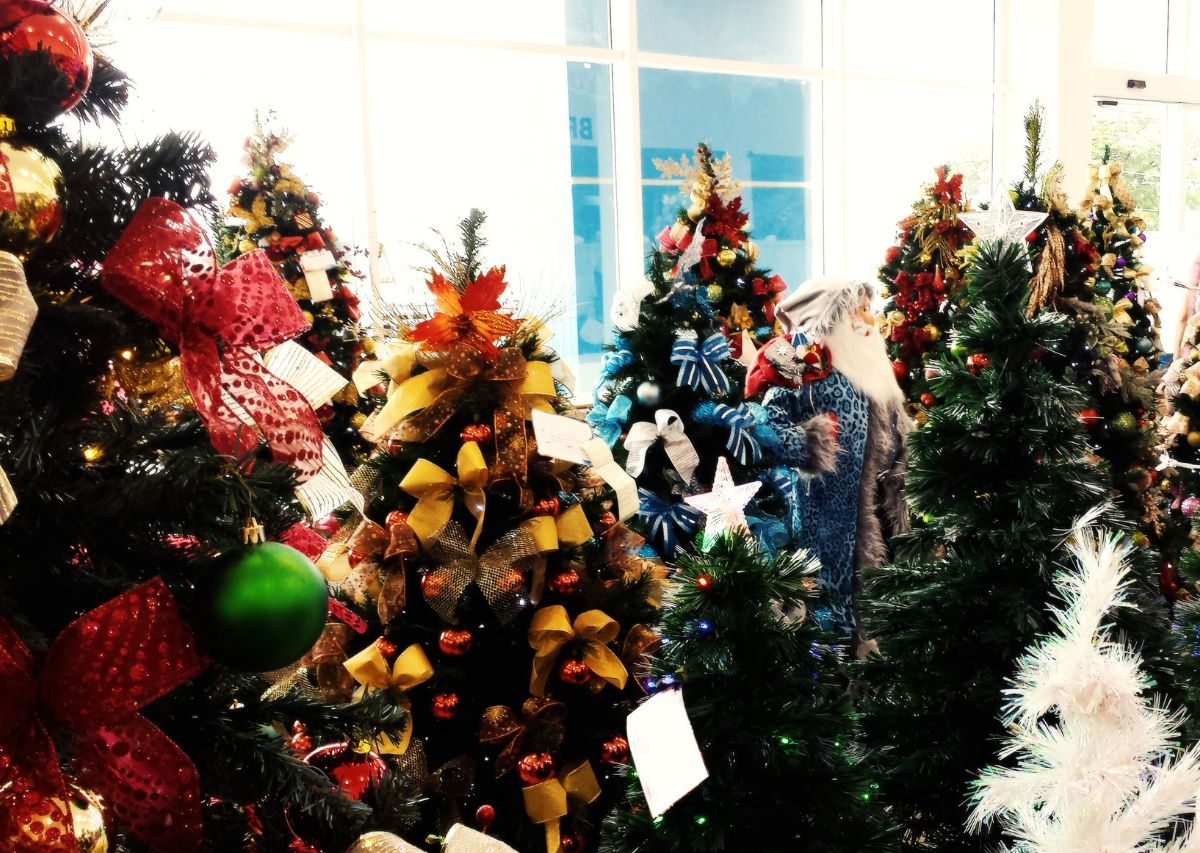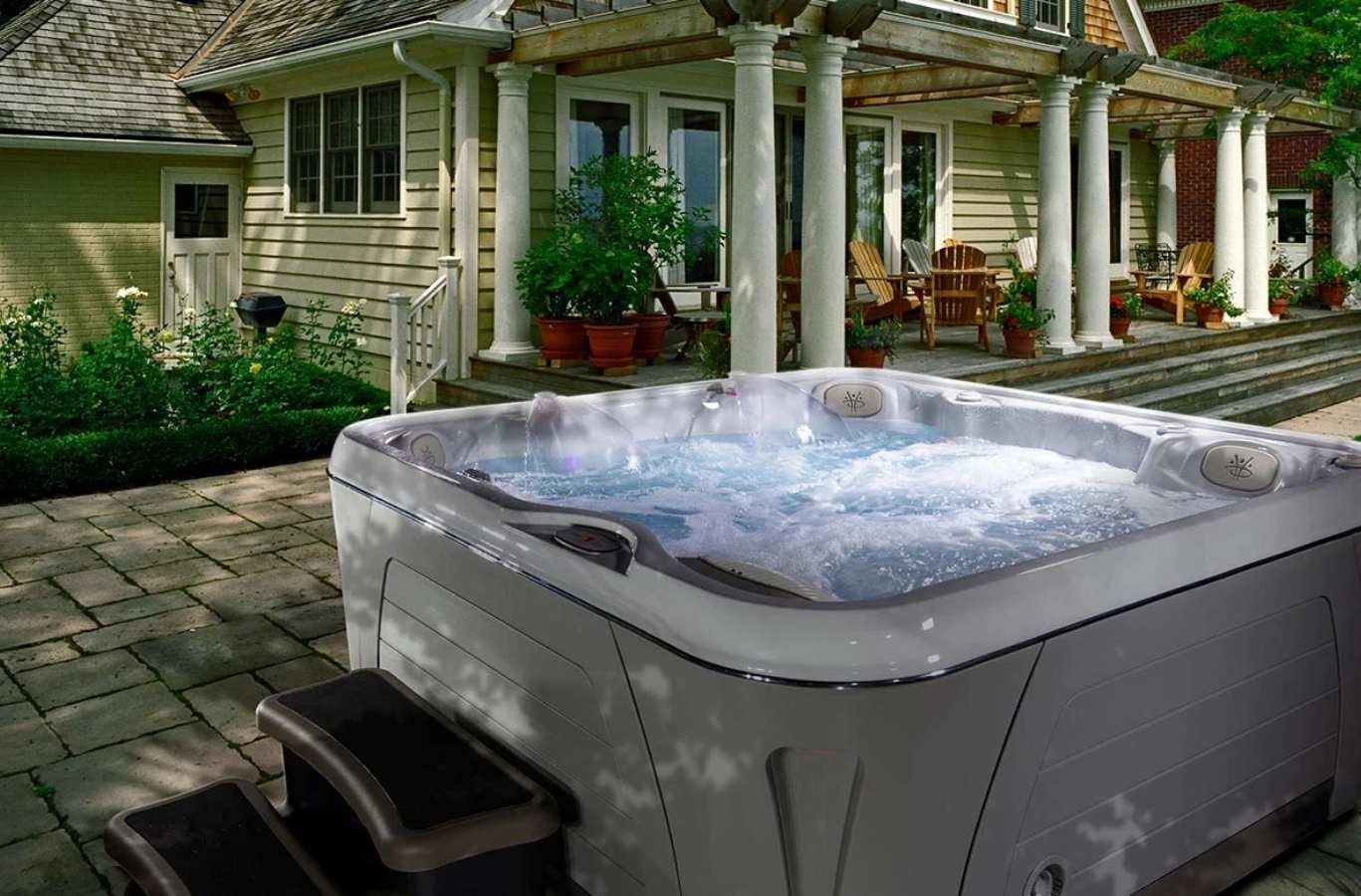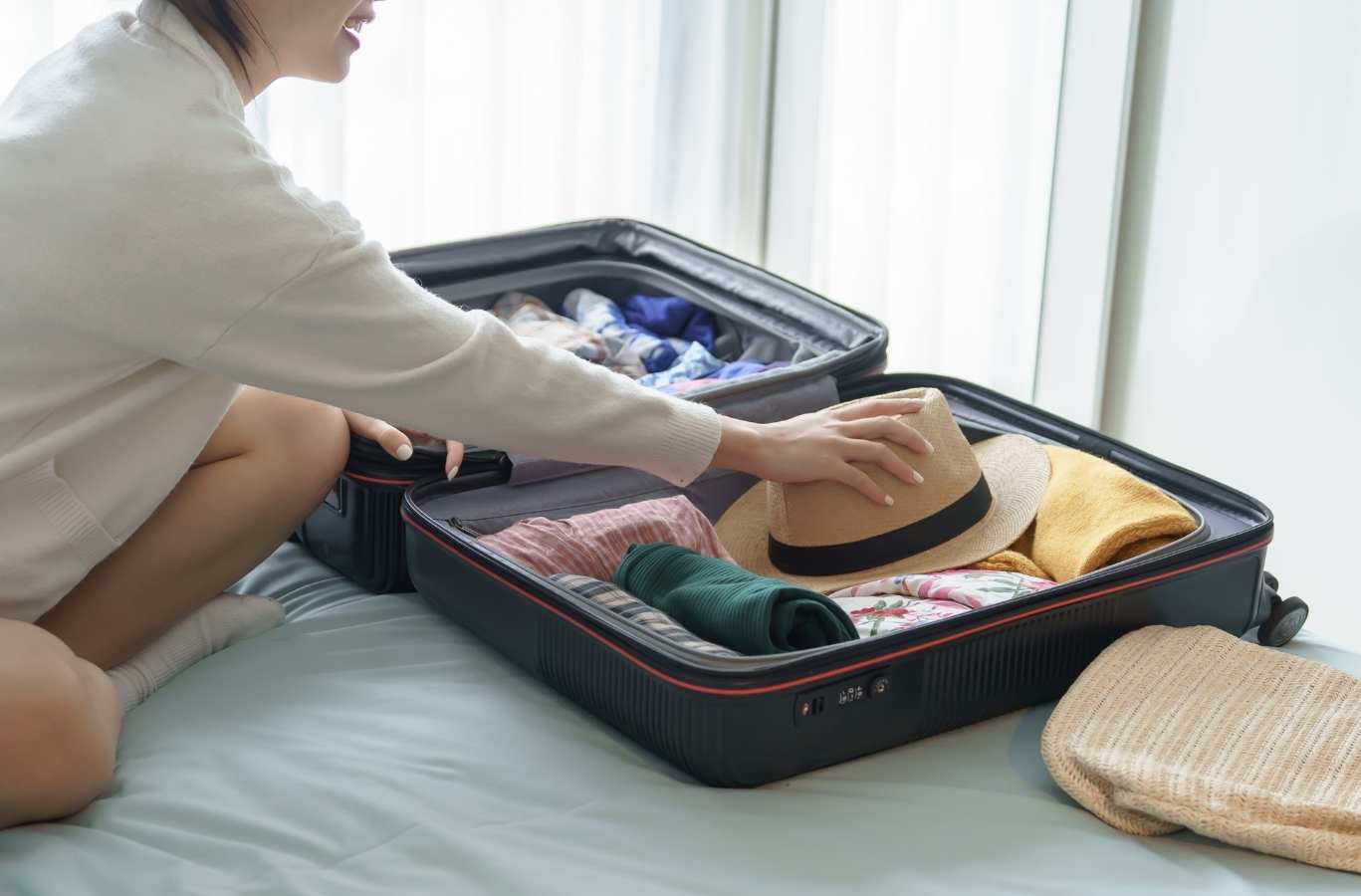How to Store Artificial Christmas Trees: Complete Guide from Alemo Transport in Annapolis, MD

After the holiday season ends, many homeowners face the challenge of properly storing their artificial Christmas trees to ensure they remain in excellent condition for years to come. Whether you are moving to a new home in the Greater DMV Area or simply need to pack away your tree for the off-season, knowing the right storage techniques is essential. At Alemo Transport, we have helped countless families in Annapolis and surrounding areas safely store and transport their holiday decorations, including valuable artificial trees. This comprehensive guide will teach you everything you need to know about storing artificial Christmas trees so they last season after season.
Why Proper Storage Matters for Artificial Christmas Trees
An artificial Christmas tree is a significant investment. Quality trees can cost hundreds of dollars and, when properly maintained, should last for many years. According to sustainability research, an artificial tree needs to be reused for seven to twenty years to have a lower carbon footprint than a fresh tree, making durability and proper storage even more important. Improper storage can lead to bent branches, damaged wires, faded colors, musty odors, and even mold growth. A tree that has been poorly stored may look shabby, require extensive repairs, or become unusable before its time. By following proper storage practices, you ensure your investment remains beautiful and functional for many holiday seasons ahead.
Preparing Your Tree for Storage
Before placing your tree into storage, thorough preparation is critical. Taking time to properly disassemble and protect your tree prevents damage and makes setup easier next season.
Remove All Decorations and Lights
Begin by carefully removing all ornaments, garland, lights, and other decorative items from your tree. Handle ornaments gently and pack fragile holiday decorations like glass ornaments separately in boxes with padding to prevent damage humidity levels. Remove light strings if they are not permanently attached to the tree. For pre-lit trees, check manufacturer instructions for light removal and storage. If lights are built into the tree sections, ensure they are unplugged and undamaged before packing. Store light strings in organized bundles or in the original packaging to prevent tangling and damage throughout the storage period. This step alone saves tremendous frustration when you are ready to decorate next year.
Clean the Tree Thoroughly
Dust and debris accumulate on artificial trees throughout the season. Use a soft brush, microfiber cloth, or vacuum with a brush attachment to gently remove dust from branches and needles. Pay special attention to branch joints and interior sections where dust settles. If the tree has accumulated grime or sticky residue, use a damp cloth to gently wipe down sections, allowing them to dry completely before storage. A clean tree will smell fresh when you unpack it next season and will be less attractive to pests during storage. Never use harsh chemicals or pressure washers, as these can damage the tree material and fade colors.
Inspect for Damage
Take time to examine your tree for any damage that occurred during the season. Check for broken branches, bent poles, damaged wires, or discolored needles. Document any existing damage with photographs for your records. Before moving, it’s also wise to pack and protect small valuable items like jewelry or delicate ornaments separately to prevent loss or damage during transport. If you are moving and plan to transport the tree yourself or with a moving company like Alemo Transport, note any pre-existing damage. This documentation is important in case damage occurs during transit and you need to file an insurance claim.
Allow Complete Drying
If you have cleaned your tree with a damp cloth or if it has been exposed to moisture, allow it to dry completely before packing. Storing a damp tree can lead to mold growth, mildew, rust on metal components, and musty odors. Place the tree in a well-ventilated area and let it air dry for at least 24 to 48 hours. Check that all joints and connection points are completely dry before proceeding with storage.
Disassembling Your Tree Properly
Most artificial Christmas trees come in sections that need to be carefully disassembled before storage. The way you disassemble your tree affects how easily it will fit into storage containers and how well it will be protected.
Compress Branches Gently
Start with the bottom section of the tree. Gently compress the branches inward toward the center pole using both your hands. Press the branches from the bottom upward, working methodically around the entire section. This compression reduces the overall diameter of the section and helps it fit into storage bags. Be gentle during this process to avoid breaking branches or cracking the branch material. Some people find it helpful to give the section a gentle hug by wrapping both arms around it and squeezing inward. Work slowly and deliberately rather than using force.
Reverse and Compress Again
Once you have compressed the branches on one side, flip or rotate the section and compress the branches on the other side. Then flip the section over and compress again. This thorough compression from multiple angles ensures the section is condensed as much as possible. Some sections may take several minutes to compress fully, and this is normal. The effort spent on proper compression makes a significant difference in how easily the tree fits into its storage container.
Secure with Ribbon or Cord
After compressing each section, use a soft ribbon, cord, or adjustable strap to loosely secure the branches in the compressed position. Make the binding snug enough to hold the shape but not so tight that you damage branches or strain the pole. This temporary binding keeps the section compact during storage and makes it easier to handle. Avoid using wire or anything sharp that could cut into the tree material or injure your hands during handling.
Remove the Stand
Most artificial trees include a sturdy plastic stand with wheels or feet. If your stand is removable, take it apart according to manufacturer instructions. Store the stand separately in a clearly labeled container. If your stand is permanent or integral to the tree design, you may need to store the tree with the stand attached, which will require a larger storage container.
Choosing the Right Storage Container
The container you use for storage is just as important as how you prepare the tree. Different storage options work better for different situations and tree sizes.
Original Storage Bags
If your tree came with original storage bags or boxes, these are typically the best option for storage. Manufacturers design these containers to fit tree sections properly and protect them from dust and moisture. Original storage bags are usually made from durable materials and are sized appropriately for your specific tree model. If you still have the original packaging, use it for optimal protection and fit.
Christmas Tree Storage Bags
Specialized Christmas tree storage bags are available online and at retail stores in various sizes. These bags are specifically designed for artificial trees and typically feature reinforced handles, durable materials, and zippered closures. Some bags are waterproof, which is an excellent choice if you live in a humid climate like the Annapolis area or if your storage space is prone to moisture. Rolling storage bags with wheels make moving heavy trees easier, especially when relocating. Purchase bags appropriately sized for your tree sections to ensure proper fit and protection.
Storage Boxes
Heavy-duty plastic storage boxes or cardboard boxes can work for tree storage if bags are not available. Choose boxes that are sturdy and appropriately sized for your tree sections. Line the bottom of boxes with packing paper or cardboard to provide cushioning. Ensure boxes are not damaged and can be sealed securely. Cardboard boxes are less ideal than plastic bags or specialized tree storage bags because they can absorb moisture and may deteriorate during long-term storage.
Rolling Containers
For larger trees or frequent movers, rolling storage containers make handling and transportation much easier. These wheeled containers reduce the physical strain of moving heavy tree sections and are particularly useful when relocating homes. Choose containers with locking wheels to keep them stationary during storage.
Packing Your Tree Sections
How you pack tree sections into your chosen storage container determines how well the tree will be protected and how easily it will unpack next season.
Layer with Protective Material
Line the bottom of your storage bag or container with packing paper, packing peanuts, or crumpled newspaper. This cushioning layer protects the tree from the hard bottom surface of the container and prevents damage during movement and transport. Add about 2 to 3 inches of protective material before placing tree sections inside.
Position Sections Strategically
Place tree sections into the container in a logical order, typically with larger sections first and smaller sections on top. Stand sections upright when possible, as this position takes up less space and protects branches better than laying sections on their sides. For multiple sections, you may place them side by side or stack them carefully if the storage container is deep enough. Avoid forcing sections into the container, as this can damage branches and the tree pole.
Fill Gaps and Prevent Movement
Fill any empty spaces between tree sections with packing material such as packing peanuts, crumpled paper, or towels. This filling prevents sections from shifting during storage and transport, which could cause damage. The goal is to ensure no movement occurs when the container is lifted, dropped slightly, or transported. Well-packed containers with minimal internal movement provide the best protection for your artificial tree.
Wrap Individual Sections
For extra protection, particularly for valuable or high-quality trees, wrap each tree section individually in plastic wrap, moving blankets, or protective material before placing it in the storage container. This extra layer shields the tree from dust, moisture, and potential pests. Individual wrapping also makes it easier to quickly identify sections next season.
Storage Location Considerations for Annapolis Area Homes
Where you store your artificial tree affects how well it is preserved during the off-season. The Annapolis area has specific climate factors that should influence your storage decisions.
Choose a Cool, Dry Location
Select a storage location that maintains relatively stable temperature and humidity levels. Before placing your tree in storage, make sure to pack seasonal clothing and other fabric decorations before storage to keep everything organized and protected from humidity. Ideal conditions are approximately 65 to 75 degrees Fahrenheit with humidity between 30 and 50 percent. Avoid locations subject to extreme temperature swings or high humidity. Basements in the Annapolis area can be damp during certain seasons, potentially exposing trees to excessive moisture. Attics can become extremely hot in summer, which can fade tree colors and damage materials over time.
Avoid Moist Environments
Excess moisture promotes mold growth, mildew, rust on metal tree components, and musty odors. Do not store your tree in unheated garages, sheds, or outdoor structures where moisture can accumulate. If your only storage option is slightly damp, place containers of baking soda or unused coffee grounds inside your storage bag or container. These natural materials absorb moisture and prevent odors from developing. Check on your stored tree periodically, particularly if you know your storage area tends toward dampness.
Protect from Pests
Trees stored in basements, garages, or attics can attract insects or rodents seeking shelter, particularly in fall and winter. Ensure your storage container is sealed tightly to prevent pest entry. Avoid storing the tree directly on concrete or damp surfaces. Elevate storage containers on shelves, pallets, or platforms to keep them away from potential pests and moisture. If pests have been a problem in your storage area in the past, consider keeping your tree in a climate-controlled area of your home instead.
Keep Away from Light
Artificial tree needles and materials can fade when exposed to direct sunlight or strong artificial light over extended periods. Store your tree in a dark or dimly lit location. If your storage location receives any direct sunlight, cover the storage container or bag with a blanket or sheet to block light exposure.
Ensure Accessibility
Choose a storage location where you can easily access your tree next season without major reorganization of other items. Store the tree at a height that does not require climbing or reaching dangerously. If your tree storage requires moving it frequently, such as before or after moving to a new home, ensure you can handle it safely without injury.
Protecting Against Moisture and Odors
The Greater DMV Area, including Annapolis, experiences seasonal humidity variations that can affect stored artificial trees. Taking extra precautions against moisture and odors ensures your tree stays fresh for many years.
Use Moisture Absorbers
Place containers of baking soda or unused coffee grounds inside your storage bag with the tree sections. These natural materials absorb excess moisture and unpleasant odors that develop during long storage periods. Replace baking soda or coffee grounds annually before storing your tree. Some people place activated charcoal in storage containers for additional odor and moisture absorption.
Include Silica Gel Packets
Silica gel desiccant packets, commonly found in new product packaging, effectively absorb moisture in storage containers. Collect silica gel packets throughout the year and place them in your tree storage bags next season. These packets are reusable for many years and provide excellent moisture control.
Ensure Adequate Air Circulation
If possible, store your tree in an area with some air circulation rather than a completely sealed, stagnant environment. Good air circulation helps prevent mold and mildew growth. However, ensure circulation does not expose the tree to drafts carrying dust or pollen from other areas.
Special Considerations for Specialty Tree Types
Different types of artificial trees may require slightly modified storage approaches based on their specific construction and materials.
Pre-Lit Trees with Permanent Lights
Trees with permanently attached lights require special care during storage. Ensure all lights are functioning before storing, and unplug them before packing. Store these trees with extra care to avoid straining light wires and connections. Do not compress these trees excessively, as tight packing can damage light wires and connections. If your pre-lit tree has many light connections between sections, store sections more loosely to prevent stress on connections.
Flip Trees and Modern Designs
Newer artificial tree models with innovative features like flip mechanisms may have specific storage requirements recommended by the manufacturer. Always consult your tree's instruction manual for proper disassembly and storage. These specialized trees often come with storage instructions and may require different packing approaches than traditional models.
Premium or High-Value Trees
Expensive, realistic-looking artificial trees warrant extra storage care. Use premium storage containers or bags designed for valuable items. Wrap sections individually in protective material. Store in climate-controlled areas whenever possible. Consider storing premium trees in a home office, bedroom closet, or other interior location rather than in exterior sheds or garages where conditions are less predictable.
Transporting Your Tree During a Move
If you are moving to a new home in the Greater DMV Area or beyond, transporting your artificial tree requires planning and care to prevent damage.
Prepare for Transport
Disassemble and pack your tree using the techniques described earlier in this guide. Ensure all sections are securely packed in storage containers with proper cushioning. Label all containers clearly as fragile and containing artificial Christmas trees. Stack boxes or bags carefully in your moving vehicle, keeping them away from items that might crush or damage them.
Use Professional Moving Services
When moving to a new home, letting professional movers handle your artificial tree ensures maximum protection. Alemo Transport's experienced team knows how to properly pack, load, transport, and unload fragile items like artificial Christmas trees. We use appropriate protective materials and secure loading techniques to prevent damage during transit. Our professional service eliminates the stress of worrying about your stored tree arriving damaged at your new home.
Climate Control During Transport
If possible, use a climate-controlled moving truck when transporting your tree long distances. Temperature and humidity fluctuations during transport can affect the tree material. A climate-controlled environment maintains more stable conditions throughout your move. For local moves within the Greater DMV Area, standard moving trucks are typically acceptable for tree transport.
Document Condition Before Transport
Take photographs of your packed tree before professional movers load it into a truck. This documentation shows the condition before transport and serves as a reference if you need to file a damage claim. Also photograph the packed sections inside the truck to show how they were loaded and secured.
Maintaining Your Tree Between Seasons
Proper storage is only part of caring for your artificial tree. A few additional steps help preserve your tree's appearance and function throughout its lifespan.
Annual Inspection
Before storing your tree each year, conduct a careful inspection for any signs of damage, wear, or deterioration. Check for bent branches, damaged wires, faded colors, or loose sections. Address any minor issues before the off-season so repairs are easier to complete. Document the tree's condition with photos, which helps track wear patterns over years of use.
Repair Damaged Sections
If you discover bent branches or other damage, attempt repairs before storing the tree. Gently straighten bent branches by holding the branch near its base and carefully bending it back to its proper position. If wires are loose or broken, contact the manufacturer about replacement sections. Making repairs promptly prevents small issues from becoming major problems.
Refresh and Fluff
When you remove your tree from storage next season, allow branches time to naturally unfold and return to their original shape. This may take several hours or even a day. Gently fluff branches by hand to help them expand fully. Do not force branches, as this can cause damage. The fluffing process typically takes less time if the tree was not compressed too tightly during storage.
Frequently Asked Questions
1. What is the ideal humidity and temperature for storing an artificial Christmas tree?
Ideal storage conditions for artificial Christmas trees are approximately 65 to 75 degrees Fahrenheit with humidity levels between 30 and 50 percent. Consistent temperatures and moderate humidity prevent damage to tree materials, fading, warping, and the development of musty odors. The Greater DMV Area experiences seasonal humidity variations, with higher humidity in summer months. If your storage area tends to be damp, use moisture absorbers like baking soda or silica gel packets to maintain appropriate humidity levels. Avoid storing trees in unheated spaces like garages, sheds, or attics where temperatures and humidity fluctuate significantly between seasons.
2. Can I store my artificial Christmas tree in the attic or basement?
While attics and basements are common storage locations due to space availability, they present challenges for artificial tree storage. Attics become extremely hot in summer, which can fade tree colors and damage synthetic materials. Attics also typically have poor insulation, leading to temperature and humidity extremes. Basements in the Annapolis area often experience dampness and high humidity, creating conditions for mold and mildew growth. If your only storage option is an attic or basement, take extra precautions such as using moisture absorbers, ensuring proper ventilation, and checking on the tree periodically. Climate-controlled interior closets or spare rooms provide better protection for valuable artificial trees.
3. How long can an artificial Christmas tree stay in storage?
A properly stored and maintained artificial Christmas tree can remain in storage indefinitely without degrading, though many experts recommend replacing trees every 10 to 20 years depending on tree quality and usage. High-quality artificial trees with proper care often remain functional and attractive for 20 years or more. Annual inspection and maintenance help catch any issues early. If you are storing a tree for more than one or two years, check on it periodically to ensure the storage environment remains appropriate and no pests or moisture issues have developed. Even dormant trees benefit from occasional inspection and environmental monitoring.
Whether you are storing your tree for next season or moving to a new home in the Greater DMV Area and need to transport your artificial Christmas tree safely, proper preparation and storage techniques ensure your investment remains beautiful and functional for many years. By following the detailed steps outlined in this guide, you will protect your tree from damage, fading, moisture, and pests. When you are ready to bring out your tree next holiday season, you will appreciate the time invested in proper storage.
For expert help with moving your artificial Christmas trees and other holiday decorations to your new home in Annapolis or the surrounding areas, contact Alemo Transport at 240-968-6717 or alemotransport@gmail.com. Our professional moving team handles delicate and valuable items with care, ensuring your possessions arrive safely at your new location. Let us help make your move as smooth and stress-free as possible while your treasured Christmas memories stay protected.

.avif)

.png)
%20(1)%20(1).png)








